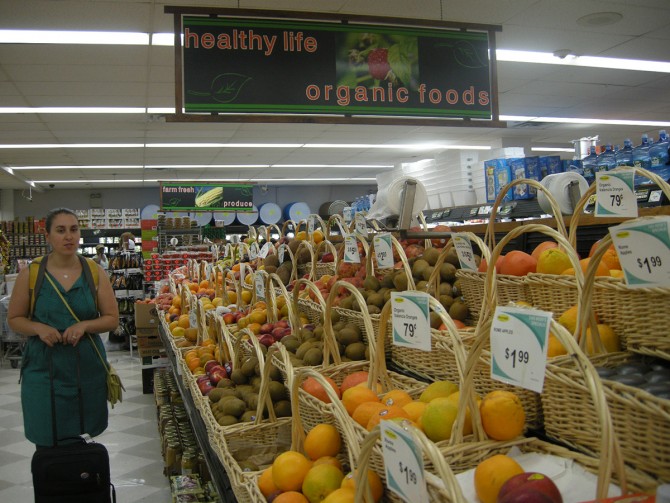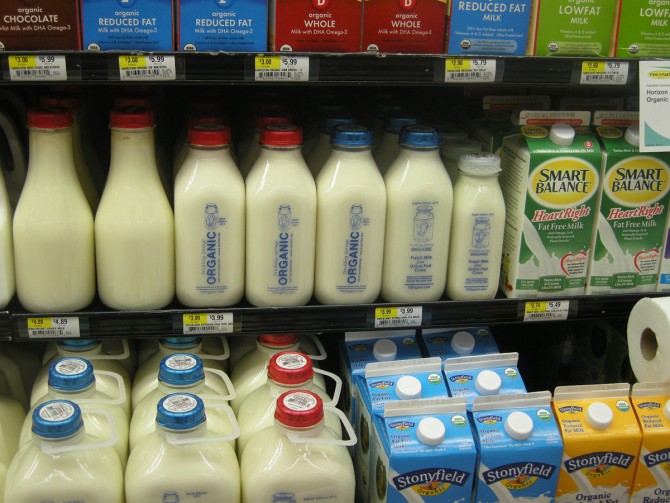Studies explore how supermarkets source foods for low-income customers
By Susan Kelley
For the first time, Cornell researchers have analyzed where Northeast supermarkets source the foods they sell to their low-income customers.
These case studies offer policymakers a better understanding of how regional food systems could bring healthier food to low-income people in the Northeast.
“We can’t underscore enough how important these stores are for the communities that they serve, both in very rural and very urban areas,” said Miguel Gómez, co-author of the study and associate professor in the Charles H. Dyson School of Applied Economics and Management. “They’re not very important in the larger national market in terms of volume. But if they’re not there, the chances that you’ll have a food desert in these areas are high.”
The researchers looked at 11 independent supermarkets – including New York state stores in Harlem, Madison County, Syracuse and Onondaga – and traced how certain foods made their way from grower to store. For each supermarket, the team tracked two of eight items: apples, potatoes, cabbage, milk, ground beef, bread, canned peaches and frozen broccoli. Because these items are grown or could be grown in the Northeast, the team could compare regional supply chains with nonregional chains.
The strength of studies lies in the detail of analysis, Gómez said. The researchers created metrics measuring the value-added economic activity in the supply chain, the transportation efficiency of nonregional versus regional supply chains, and the percentage of each item that stores source from regional producers.
“Although the number of items we analyzed was very small, the number of different supply chains was far greater,” said co-author Kristen Park, an extension associate also in the Charles H. Dyson School of Applied Economics and Management. “That gave us a glimpse into many different supply arrangements and supplier entities.”
The team learned three key lessons.
First, a large portion of the apples and milk sold at those stores is produced or grown in the Northeast, thanks to the region’s significant infrastructure for those items. On average the stores sourced nearly 100 percent of their milk and 77 percent of their apples regionally.
That’s good news, because fuel costs in those regional supply chains are lower, the products are fresher and last longer, and the chain experiences fewer shipping delays, Park added.
The Harlem store demonstrates the effect. It sells mostly Idaho potatoes, resulting in a supply chain that is less fuel efficient. Maine potatoes require almost one-fourth the transportation fuel as Idaho potatoes.
However, producers rarely label the foods as local or regional products for the consumer. “That’s a missed opportunity,” Gómez said.
Second, regional supply chains add significant economic activity – even for items produced outside the region. “That’s a very important point, because it’s generating a lot of value, not in production but in all the other activities that are necessary: brokerage, wholesaling, transport, retailing,” Gómez said.
A study of a Syracuse store found that value-added activities conducted in the region were 76 percent of the total value of frozen broccoli and 53 percent for canned peaches – even though both items are grown and manufactured outside the region.
Third, the store’s ownership, size and economies of scale dictate the structure of the store’s supply chain. Many of the retailers used different types of supply chain partners in ways that helped them define their company’s market strategy.
“These independent stores are struggling, but there is a lot of innovation going on,” Gómez said.
The Onondaga County store, for example, is a gas station that offers far more fresh choices than the average convenience store, including sandwiches, fresh-cut fruits and vegetables, produce and meat.
And “dollar stores” have been expanding and now sell frozen and fresh fruits and vegetables – not just canned items. “They are located in rural areas where many stores have been disappearing,” Gómez said. “They are really doing a great job of filling that gap.”
The Cornell team conducted the case studies as part of a larger research project, Enhancing Food Security in the Northeast Through Regional Food Systems (EFSNE), which is supported by the U.S. Department of Agriculture. From 2011 to 2018, EFSNE worked with more than 40 partners at universities, nonprofits and government agencies to explore whether greater reliance on regionally produced food could improve food access in low-income communities while also benefiting farmers, food supply chain firms and others in the food system.
The studies are published in bulletins 17-06 through 17-16 available at https://dyson.cornell.edu/outreach/extension-bulletins/#2017.
Media Contact
Get Cornell news delivered right to your inbox.
Subscribe


